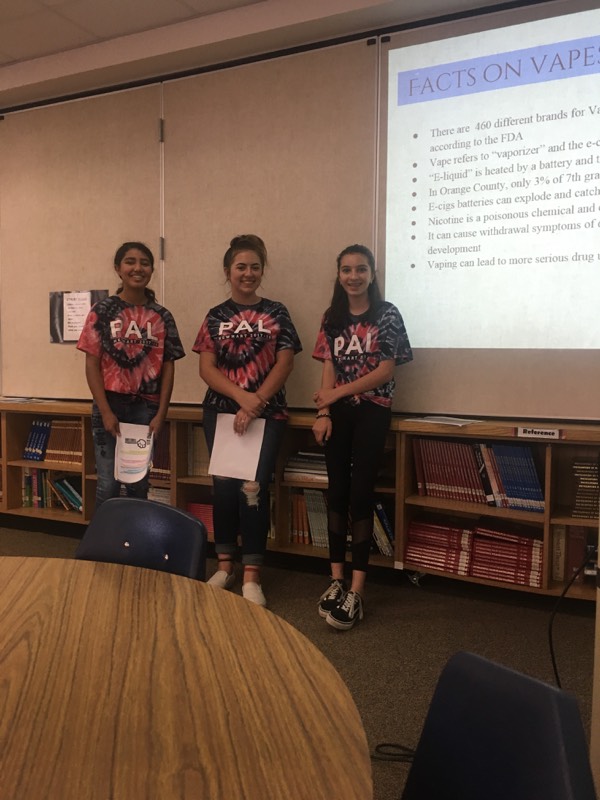This year, a group of student leaders from Newhart Middle School in Capistrano Unified took it upon themselves to tackle a growing concern: the skyrocketing rates of vaping among youth.
Over the spring, Newhart’s PAL Peer Assistance Leadership class — PAL empowers students to help other students — conducted research on nicotine delivery devices to educate both kids and adults, and to correct some common misconceptions. To do this work, they leveraged the model of the prevention-focused Club Live, which is administered by OCDE as part of the Orange County Friday Night Live Partnership.
“They are technically now a PAL/Club Live class,” OCDE Program Specialist Elke Petras said.
 Vapes are a type of battery-powered electronic cigarette used to deliver nicotine, flavorings and other chemicals. While some look like cigarettes, others resemble pens, flash drives or battery packs, making them difficult to spot.
Vapes are a type of battery-powered electronic cigarette used to deliver nicotine, flavorings and other chemicals. While some look like cigarettes, others resemble pens, flash drives or battery packs, making them difficult to spot.
Because vaping is fairly new, researchers are still learning about its long-term health effects. But e-cigarettes and other devices typically contain nicotine, which is highly addictive and can harm adolescent brain development. Moreover, the heating of propylene glycol and flavorings can generate formaldehyde and other carcinogens.
A study released in December by the National Institute on Drug Abuse says nearly 1 in 3 high school seniors reported using some kind of vaping device in the prior the year. According to the Centers for Disease Control and Prevention, e-cigarette use among middle and high school students tripled from 2013 to 2014 alone.
In response to these trends, Newhart’s PAL students worked to educate themselves about electronic cigarettes, and they developed strategies designed to decrease use among their peers.
OCDE’s Tobacco-Use Prevention Education program was happy to assist, providing insight into the mechanics of e-cigarettes, their flavorings and marketing strategies. In turn, the youth advocates shared their ideas about why some students choose to use them — and why most choose not to — and discussed the problem with school administrators.
After conducting their research, the Newhart students worked in small groups to develop a presentation, which they delivered to the school’s staff and the Parent Teacher Student Association.
They also launched a weeklong education campaign in May with daily classroom announcements and a poster blitz. The activities concluded with a lunch event that included interactive games, which were used to test their fellow students’ knowledge of facts shared during the week.
“These activities demonstrate the power of two programs joining together with the common goal of empowering youth to make a difference in the area of substance abuse prevention on campus and in the community,” Petras said.
